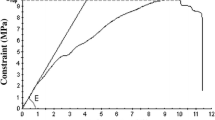Summary. We devised a method of sterilising bone allografts which consists of defatting in chloroform and methanol, freeze-drying and sterilisation with ethylene oxide gas. The purpose of defatting and freeze-drying was to facilitate subsequent sterilisation by eliminating the barrier to diffusion of the gas into bone, to lower residual levels of ethylene oxide and its toxic by-products, to eliminate alloantigens and to make storage possible at room temperature. The efficacy and safety of the method were evaluated by testing the sterilisation of infected bone from 6 patients with active chronic osteomyelitis, the penetration of ethylene oxide into human femoral heads treated by this or by freeze-drying or freeze-thawing, and the desorption of ethylene oxide and its toxic by-products from pieces of bone treated by these methods. All the samples of infected bone tested negative for bacteria after treatment. The gas penetrated into the central area of the femoral heads in a few hours. Residual levels of ethylene oxide and its toxic by-products were much lower in the treated bone than in freeze-dried or freeze-thawed bone, and decreased quickly in flowing air. Prior defatting and freeze-drying facilitated penetration of ethylene oxide into bone during sterilisation and the desorption of ethylene oxide and its toxic by-products after sterilisation. Preparation under clean, but not sterile, conditions and storage at room temperature make bone banking more practical and efficient.
Résumé. Nous avons utilisé cliniquement des allogreffes osseuses en les traitant par dégraissage dans du chloroforme et du méthanol, par lyophilisation et par stérilisation avec du gaz d’oxyde d’éthylène. Le but du dégraissage et de la lyophilisation est de faciliter une stérilisation ultérieure en éliminant la barrière à la diffusion du gaz d’oxyde d’éthylène dans les os, d’abaisser les niveaux résiduels de l’oxyde d’éthylène et de ses sous-produits toxiques après la stérilisation, d’éliminer les iso-antigènes et de rendre possible un stockade à la température de la pièce. Des infections postopératoires, vérifiées par une culture bactérienne positive, se sont produites chez 2 patients sur 396 (0.5%) recevant cette allogreffe préparée dans des conditions propres, mais non stériles. Des sections histologiques de la zone autour de l’interface de l’allogreffe et de l’assise de l’os du receveur ont montré: 1) des ostéoblastes bordant la surface de l’allogreffe osseuse corticale avec des appositions d’os néo-formé, 2) le développement du nouvel os dans les canaux vasculaires haversiens, et 3) une légère infiltration de petites cellules rondes inflammatoires. L’incidence négligeable d’infections postopératoires a permis de confirmer l’efficacité de la stérilisation. Les sections histologiques de spécimens biopsiques ont montré la préservation de la capacité de la greffe à supporter la formation du nouvel os et éliminer les iso-antigènes. Nous pouvons donc conclure que cette méthode est fiable pour des allogreffes osseuses cliniquement stérilisées et ne présente qu’un léger effet nuisible.
Similar content being viewed by others
Author information
Authors and Affiliations
Additional information
Accepted: 8 September 1995
Rights and permissions
About this article
Cite this article
Kakiuchi, M., Ono, K., Nishimura, A. et al. Preparation of bank bone using defatting, freeze-drying and sterilisation with ethylene oxide gas . International Orthopaedics SICOT 20, 142–146 (1996). https://doi.org/10.1007/s002640050051
Issue Date:
DOI: https://doi.org/10.1007/s002640050051




